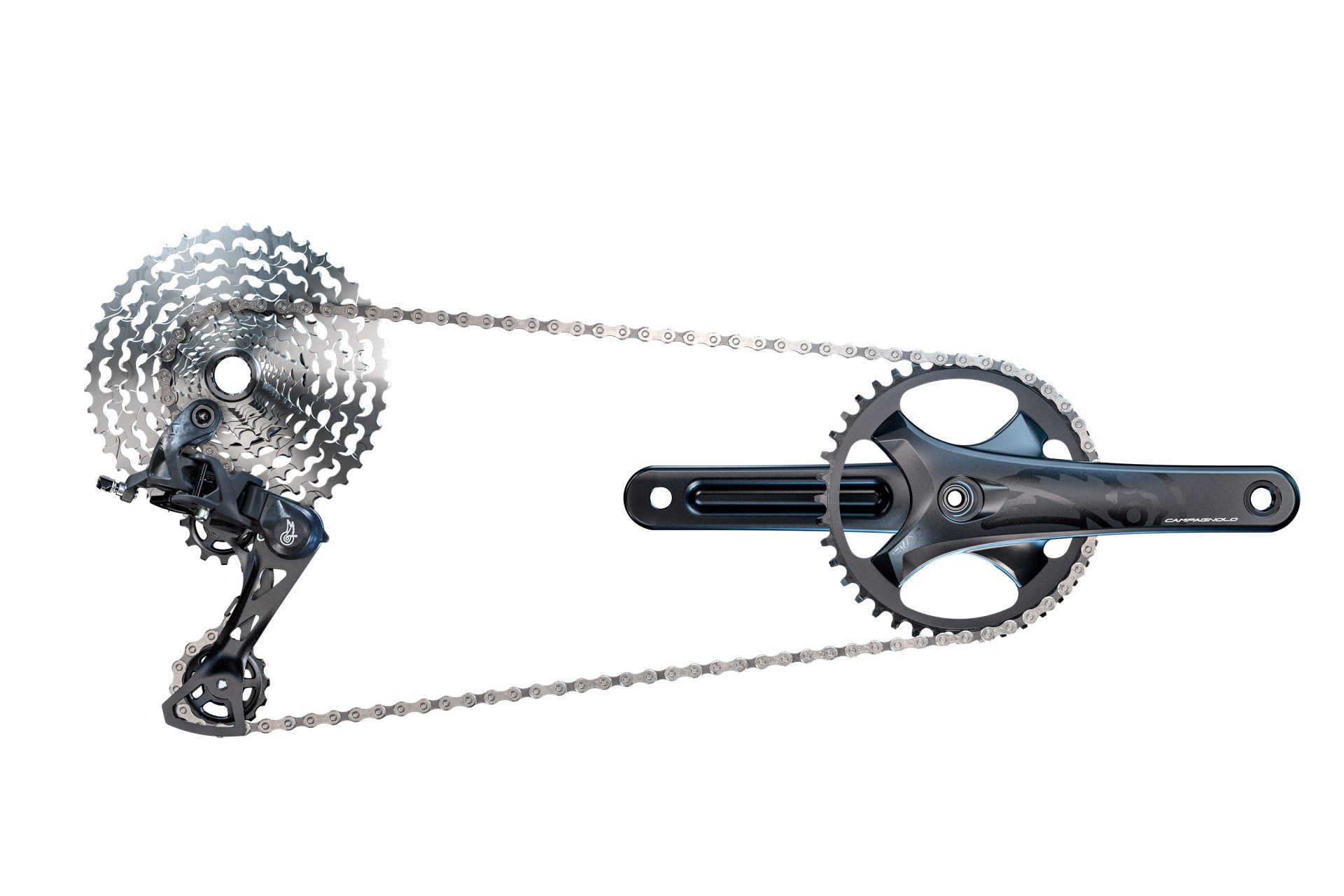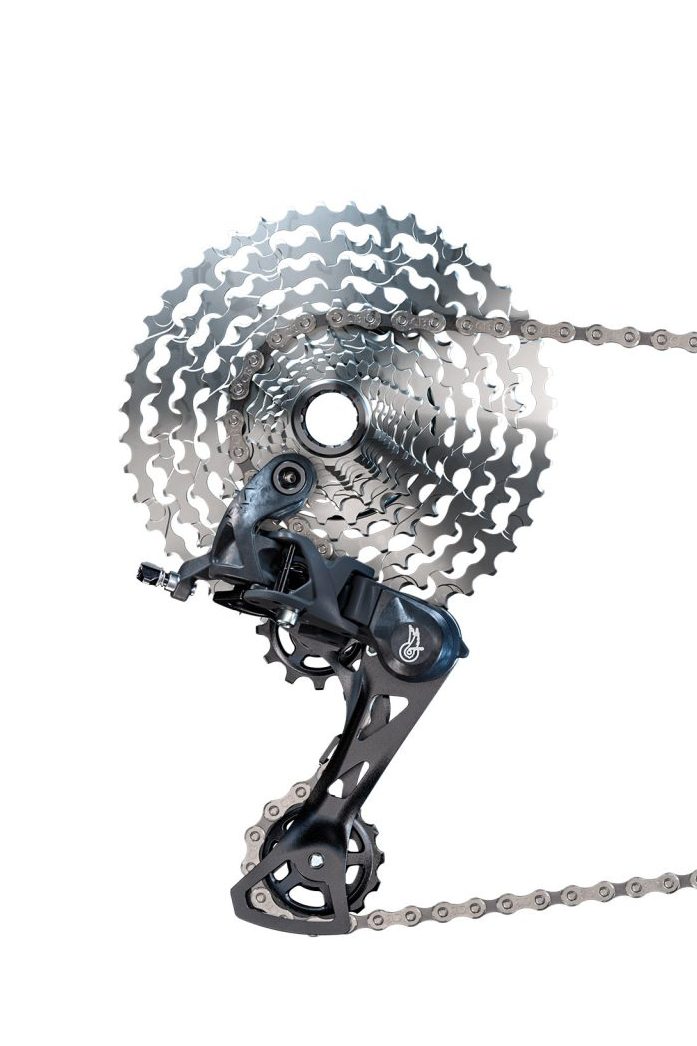Campagnolo created quite the splash when it debuted its Ekar gravel groupset at the end of 2020, what with its innovative 1×13-speed layout and a lightweight mechanical format that not only worked well, but was actually available when mainstream options were frustratingly hard to come by. Campagnolo is now looking to build on that success with a new mid-range Ekar GT version. It costs less and is heavier than original Ekar – as you’d expect – but other features might actually make it the better choice of the two.
More range, more aluminum, and updated ergonomics
Ekar GT retains the core features that form the foundation of original Ekar. It’s still built around a 13-speed cassette and a single chainring, and while the disc brakes are hydraulic, the shifting is still cable actuated – to date, there’s still been no word of an electronic version. Those shifts are once again initiated by Campagnolo’s long-running Ergopower lever design with a single paddle behind the brake lever blade for downshifts and a small C-shaped thumb-operated button on the inboard side of the hood for upshifts, and the cassette mounts to the same Campagnolo-specific N3W freehub body.
So no major changes there.
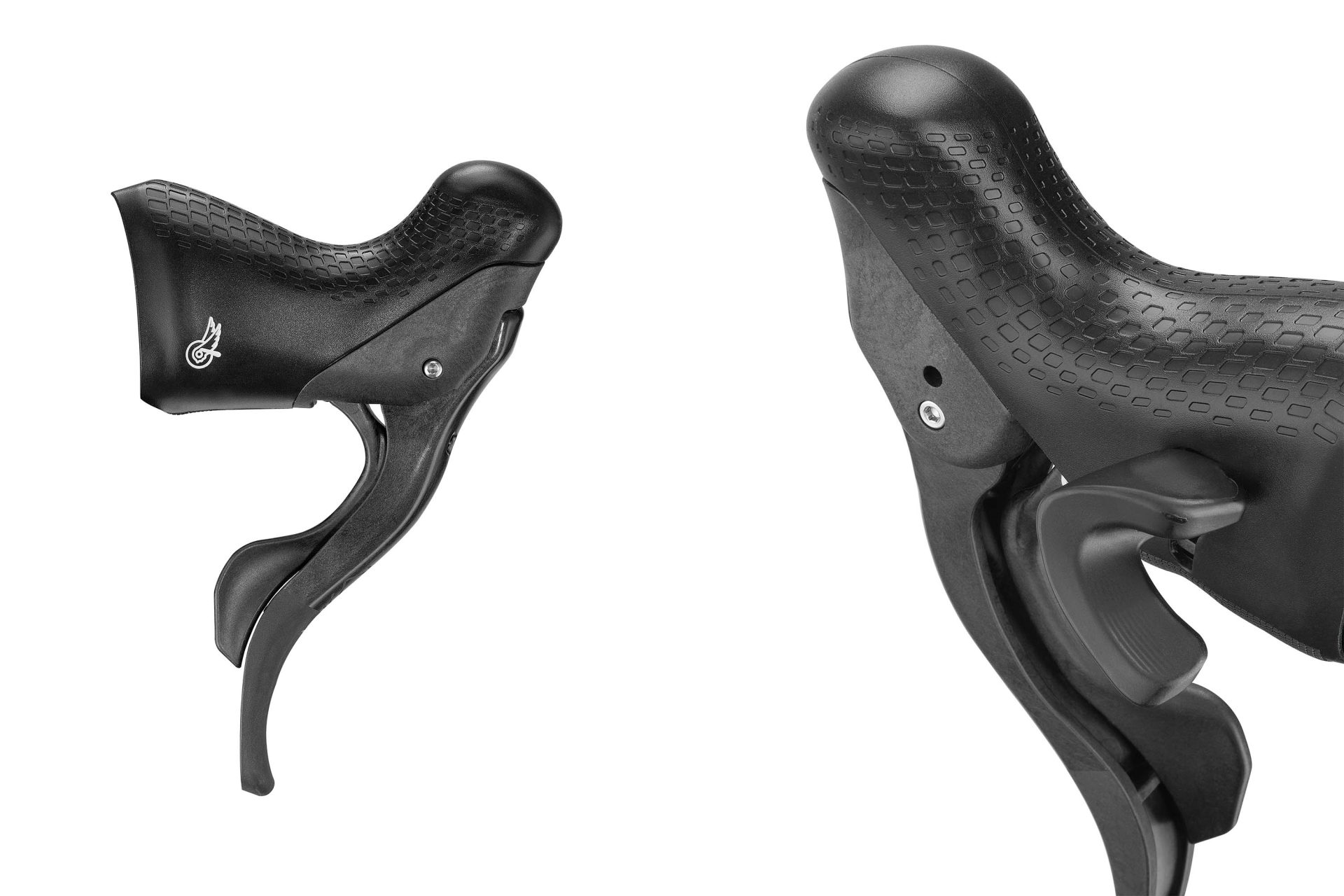
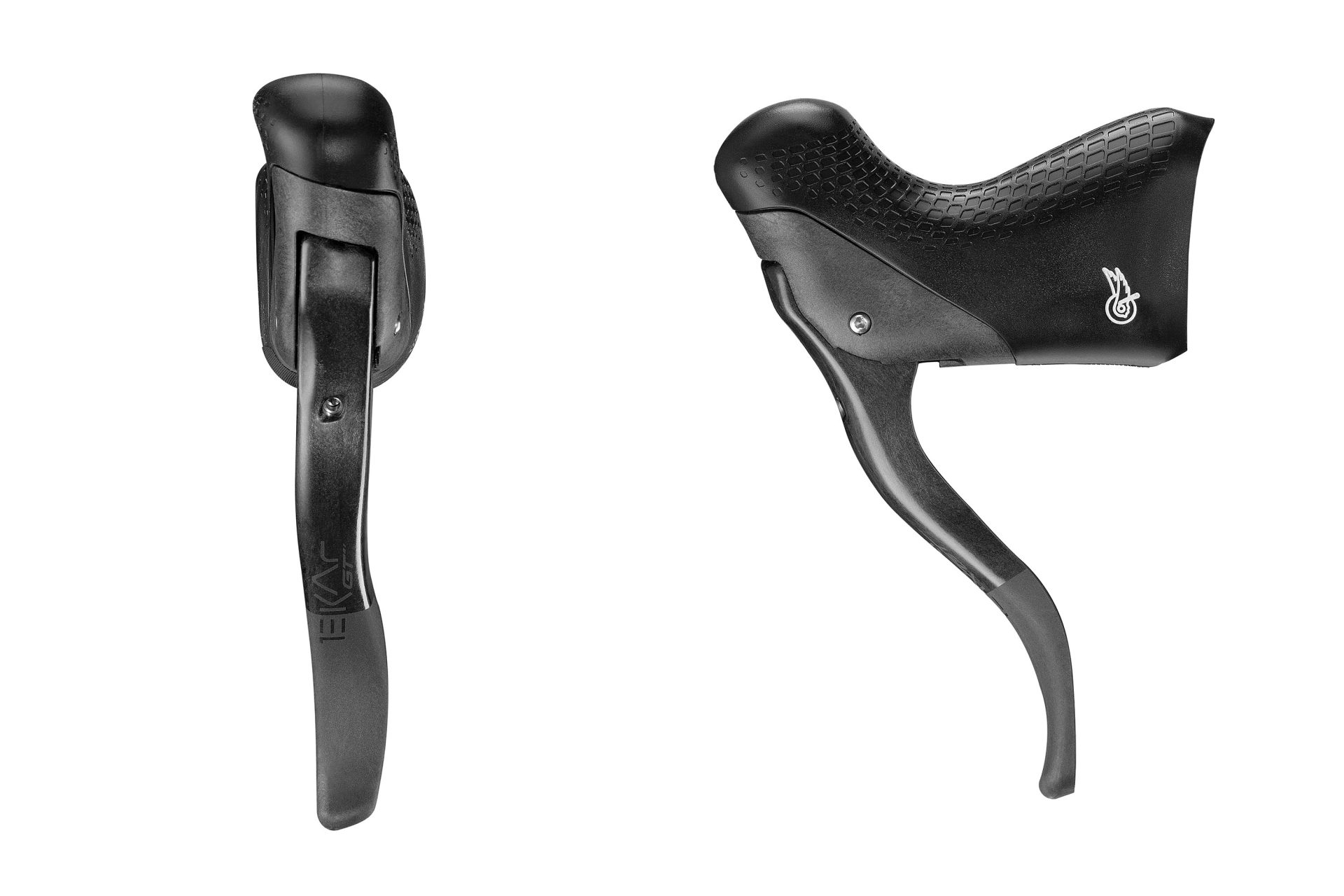
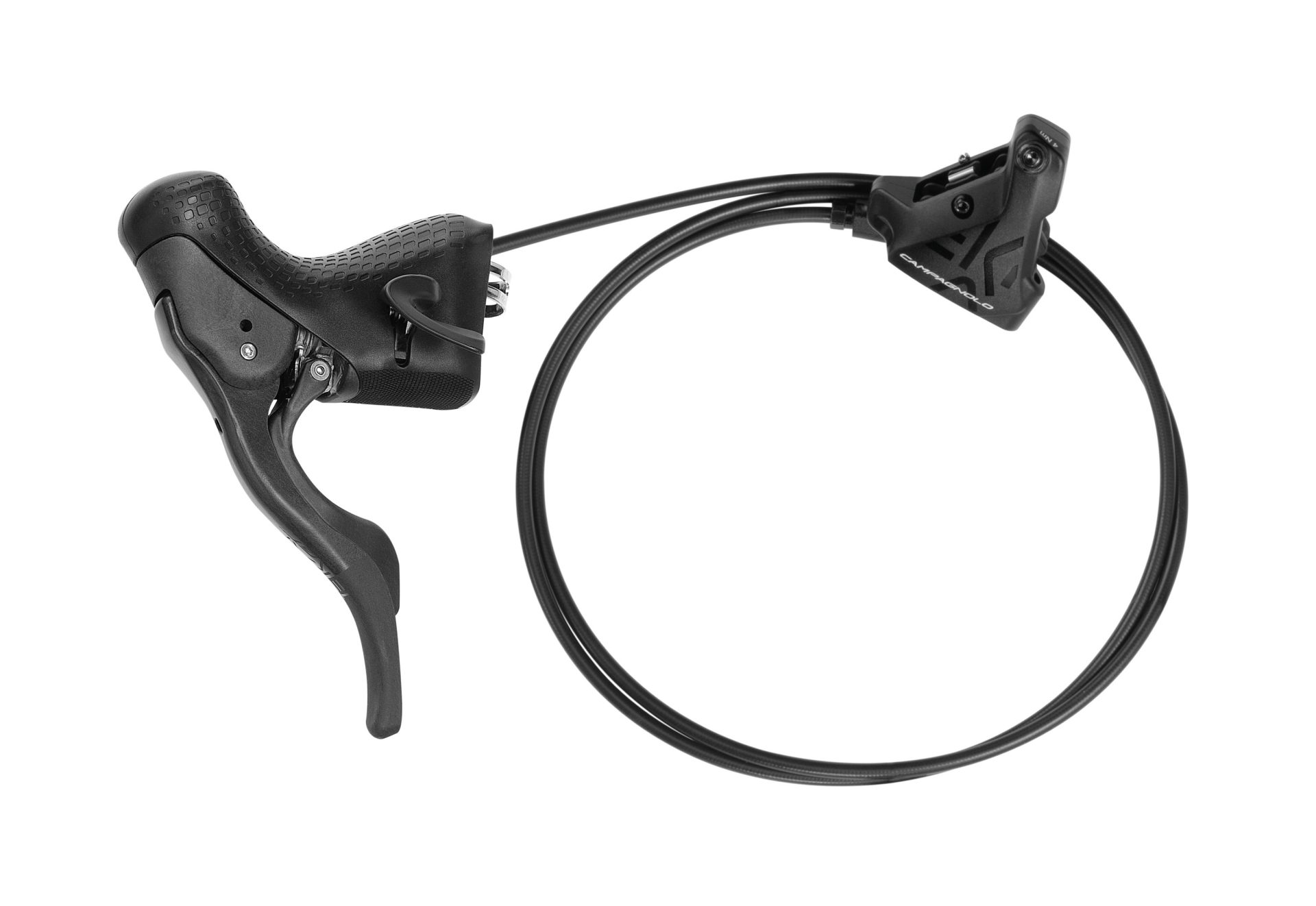
The cassette options include the same 9-36T, 9-42T, and 10-44T sizes as original Ekar, but Ekar GT adds a new 10-48T option. Ekar GT also uses a different cassette construction. Whereas Ekar cassettes feature a mix of machined steel sprocket clusters on aluminum carriers, Ekar GT’s five largest sprockets are milled from a single chunk of steel with an integrated carrier. The next five sprockets feature a more conventional stamped construction with aluminum spacers in between, and the final three gears form another one-piece cluster. Despite the big change in construction, the claimed weights show only very minor weight savings with Ekar GT that aren’t explained.
It’s worth pointing out that the new 10-48T cassette only provides a hint more total range than the 9-42T. However, there is also a new 36-tooth chainring with Ekar GT to go along with the existing 38, 40, 42, and 44T options, which opens the possibility of a significantly lower climbing gear that should expand Ekar GT’s appeal with the adventure and bikepacking crowd – or even riders who just want easier gears in general.

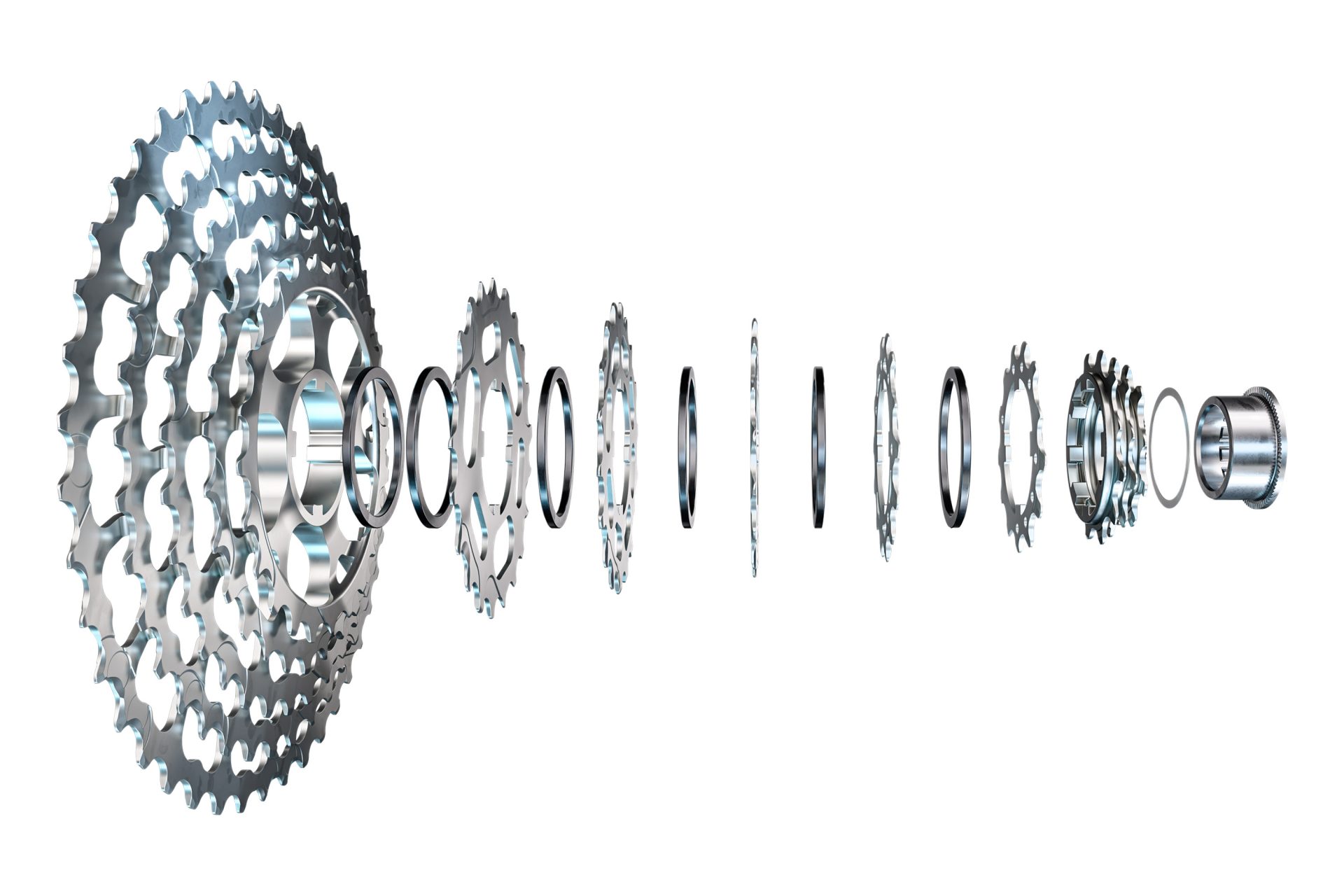
Current Ekar users shouldn’t get too excited about that 10-48T cassette, though, as the new Ekar GT rear derailleur has a 21 mm-longer cage to handle the larger 38-tooth spread. The Ekar GT rear derailleur also appears to feature more fiber-reinforced composite construction as compared to the more aluminum-intensive content of Ekar, and Campagnolo says the larger holes in the new pulley wheels are easier to clean (although solid ones would be even less likely to pack with gunk). The pulley cage clutch internals and cage lock mechanism are carried over, and stainless steel hardware is used all around.
More changes are afoot in the new Ekar GT Ergopower levers. The shift actuation itself carries over – unfortunately with the same single-upshift limitation – but there’s a newly streamlined shape with less taper in the body and a less pronounced peak up front that I anticipate offers a more natural feel in your hands. The lever blades are also still aluminum and have adjustable reach, and the updated hoods sport a more deeply textured surface that should presumably help with grip in wet or muddy conditions.
Down below, the new Ekar GT crank is essentially an aluminum version of the carbon fiber setup found on Ekar. The arms are solid-forged with deep recesses on their backsides, and the narrow-wide chainrings attach to the 104 mm BCD symmetrical integrated spider with four bolts that feed in from behind. Campagnolo is sticking with its tried-and-true Ultra-Torque format with twin 24 mm-diameter steel spindle halves that join in the middle with a Hirth-style splined interface. Crankarms are offered in 170, 172.5, and 175 mm lengths, all with a 151 mm Q-factor.

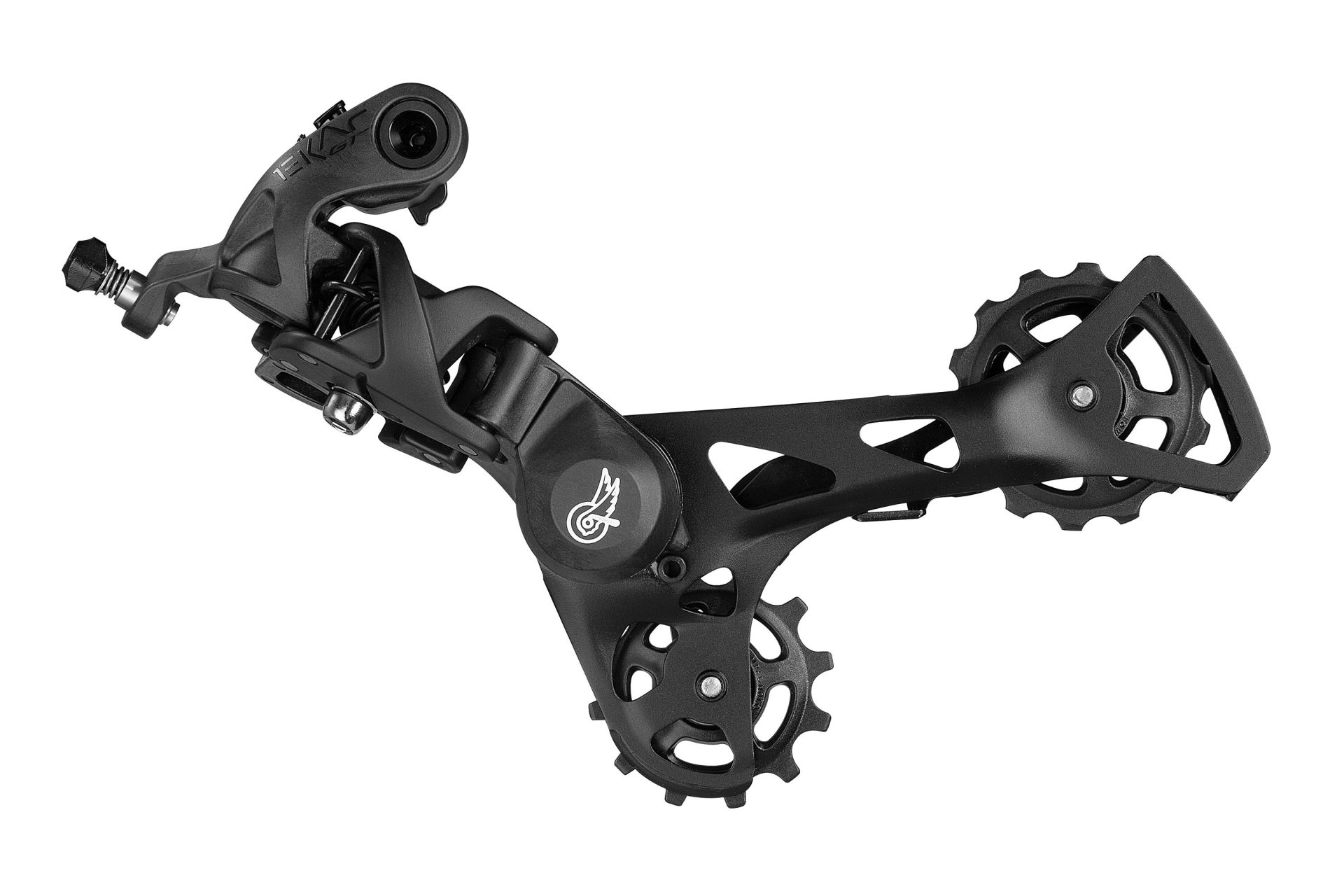
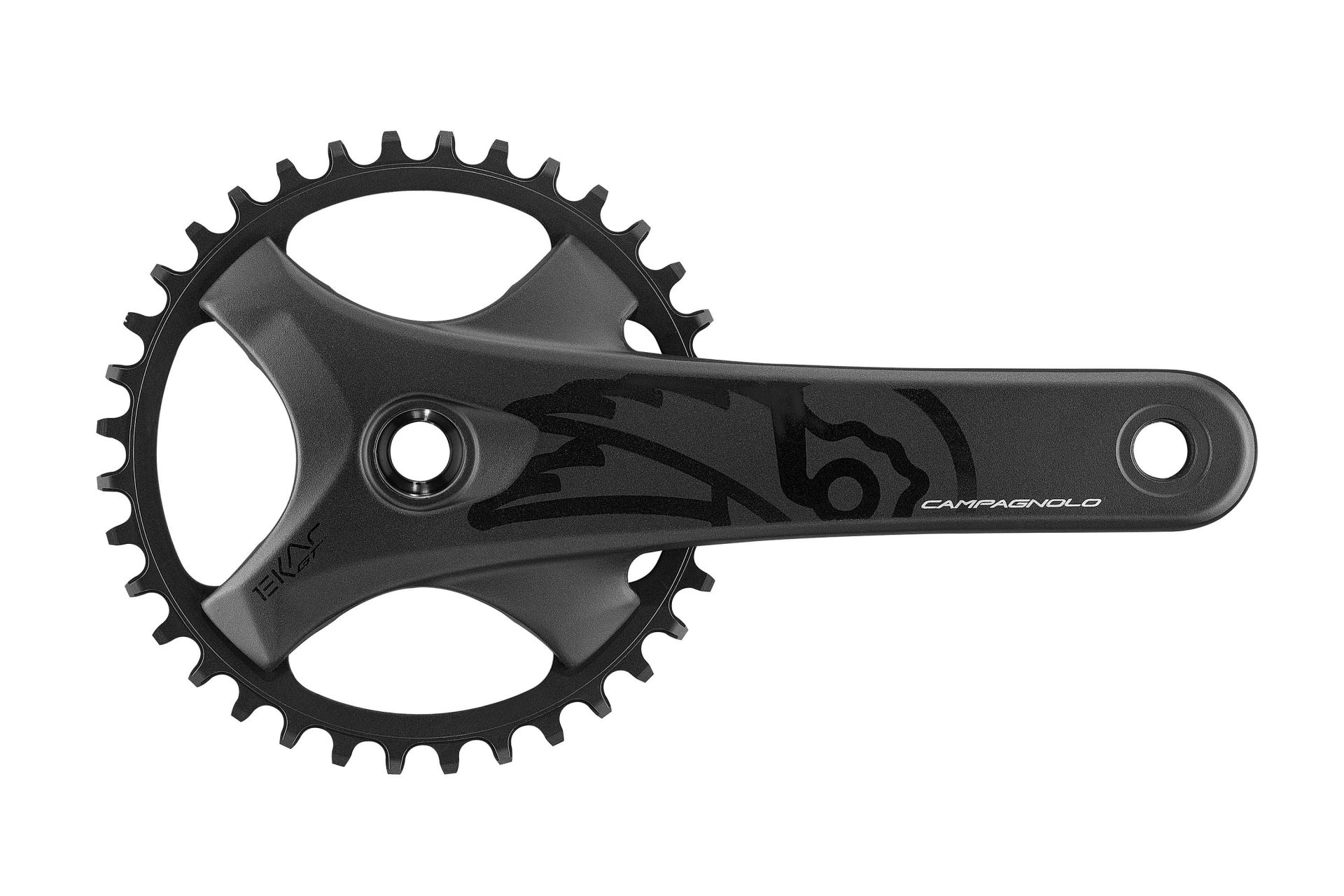
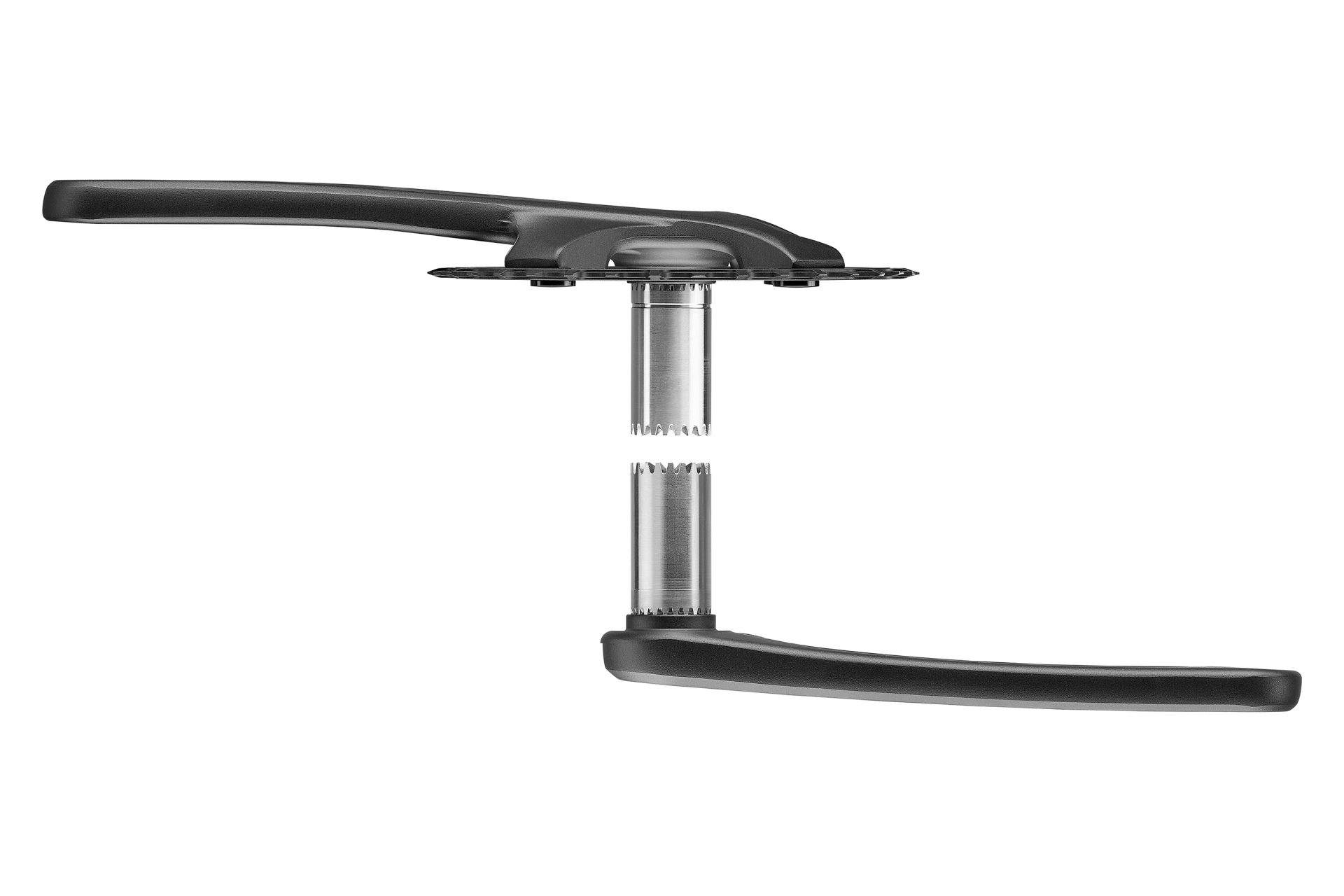
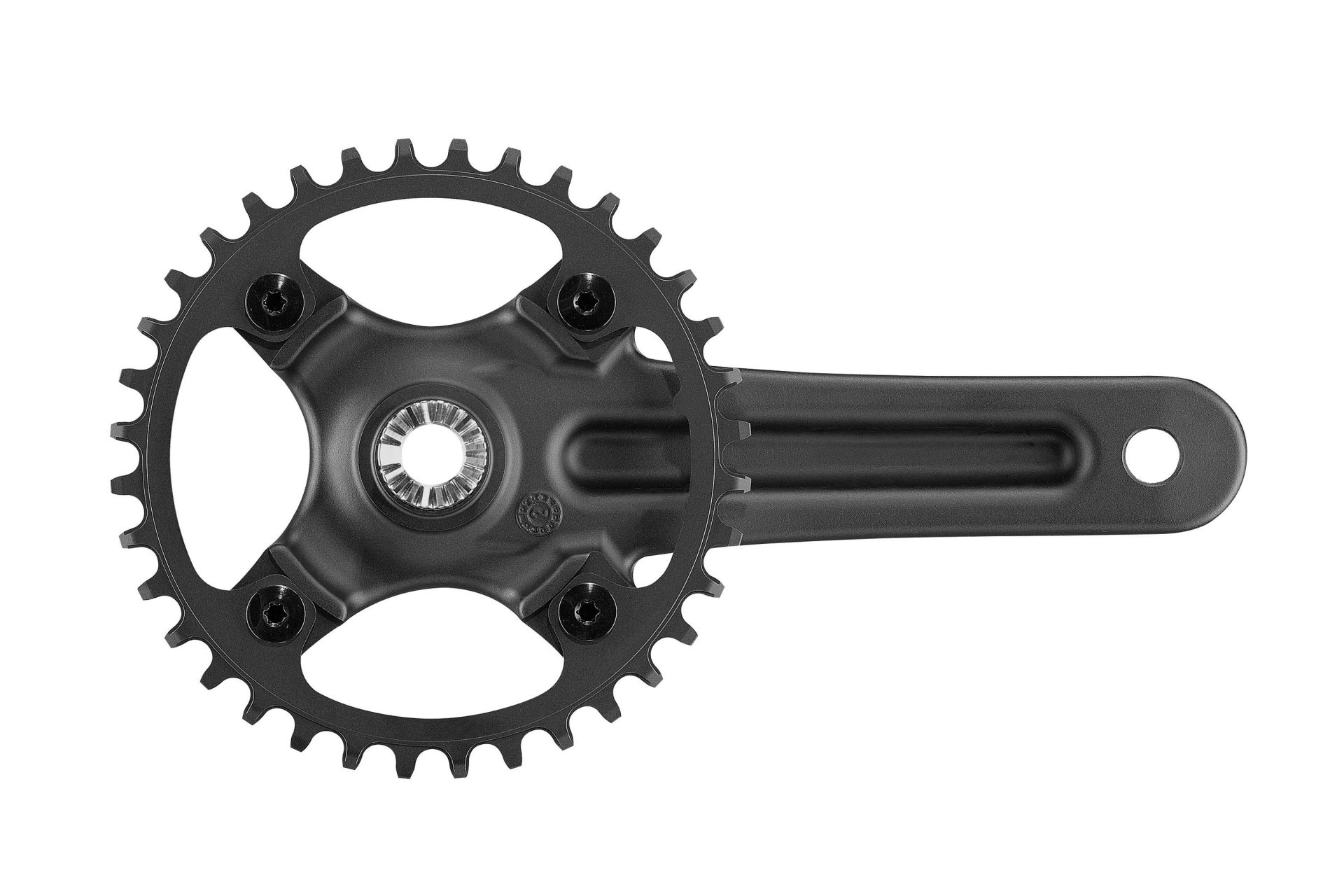
As far as we can tell, the hydraulic disc brakes are carried over from Ekar, aside from minor cosmetic changes.
Campagnolo claims a complete Ekar GT groupset tips the scales at 2,700 g – 315 g more than Ekar. Individual component claimed weights are as follows:
| Campagnolo Ekar GT Ergopower levers (with brake calipers and hoses, pair): | 760 g |
| Campagnolo Ekar GT rear derailleur: | 310 g |
| Campagnolo Ekar GT crankset (172.5 mm arms with 38T chainring): | 850 g |
| Campagnolo Ekar GT cassette (9-36T): | 340 g |
| Campagnolo Ekar GT cassette (9-42T): | 380 g |
| Campagnolo Ekar GT cassette (10-44T): | 400 g |
| Campagnolo Ekar GT cassette (10-48T): | 435 g |
| Campagnolo Ekar GT chain (118 links): | 242 g |
As for price, official retail is set at US$1,600 / €1,500 – a decent drop from the US$1,800 / €1,700 MSRP of the original Ekar groupset.
New Zonda GT aluminum wheels are aimed at gravel riders on a budget
Going along with that new Ekar GT groupset are new Zonda GT aluminum clincher wheels.
These feature the usual Campagnolo hallmarks, such as tubeless-compatible rims with solid tire beds (meaning there’s no tubeless tape required), extra machining between the spoke holes to decrease weight, “G3” triplet spoke lacing for more even tensions from side to side – not to mention a more distinctive aesthetic – and adjustable cup-and-cone bearings.
With a modest 29 mm rim height, Campagnolo obviously isn’t claiming the Zonda GT to be an aero wheelset. They’re instead targeting the gravel market, which strikes me as a little curious given the 23 mm internal rim width is the same as the very much road-specific Bora WTO range that was launched just a few weeks ago.

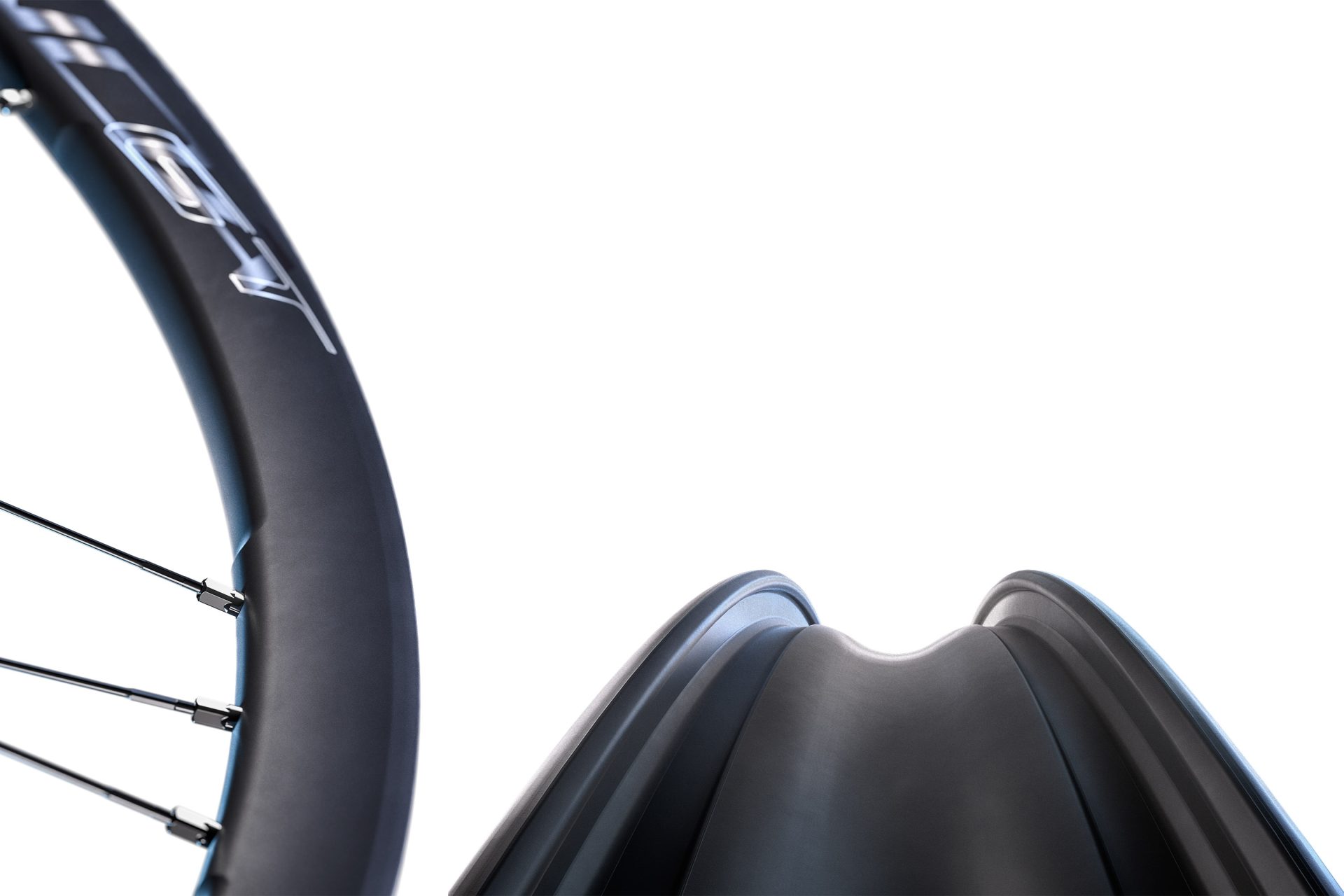
Claimed weight for the set is a modest 1,690 g, and retail price is similarly mid-range at US$750 / €700.
Wondering how well all of this works in the real world? So am I. Fingers crossed, we’ll be able to get our hands on some samples for proper testing.
In the meantime, more information can be found at www.campagnolo.com.
What did you think of this story?
